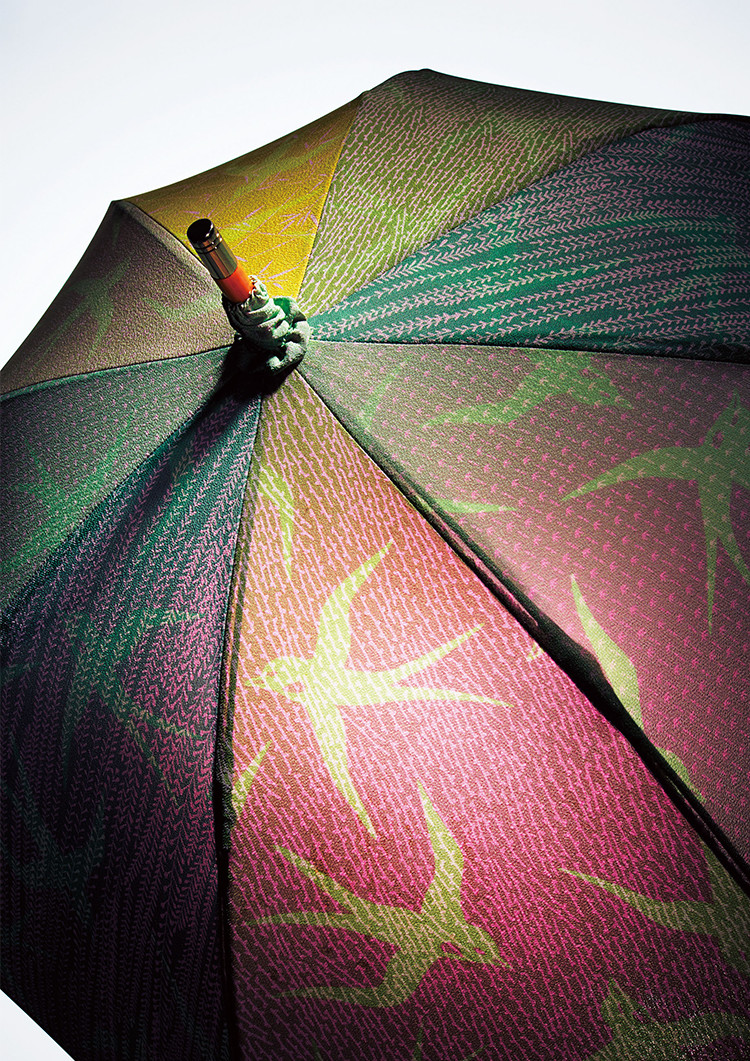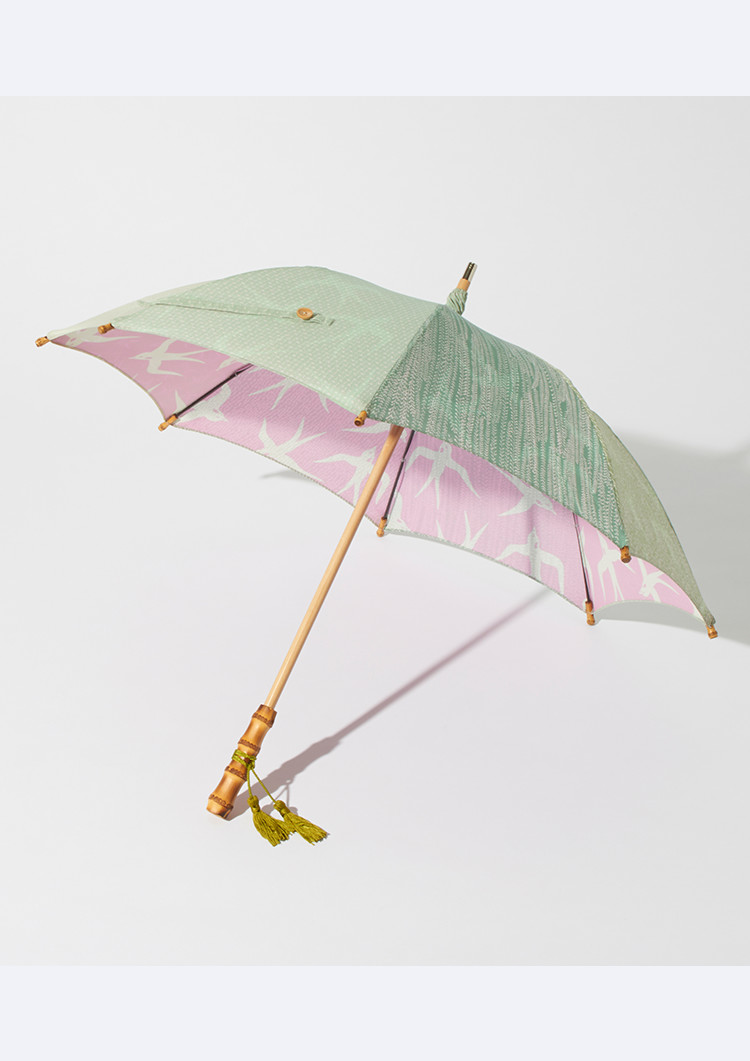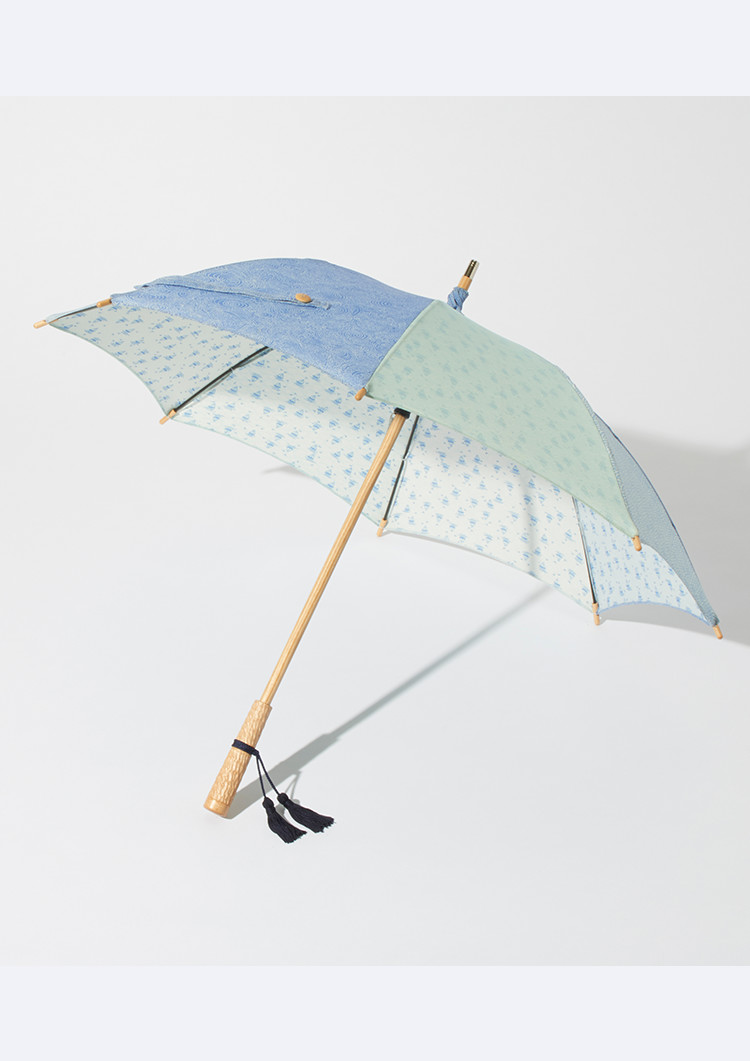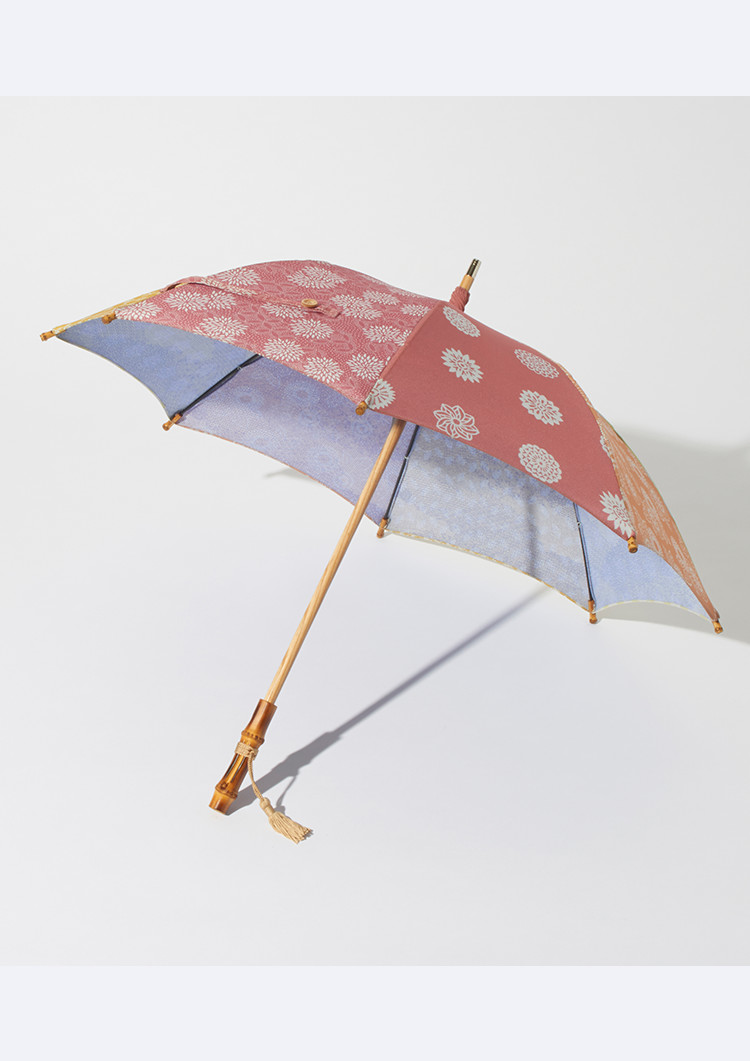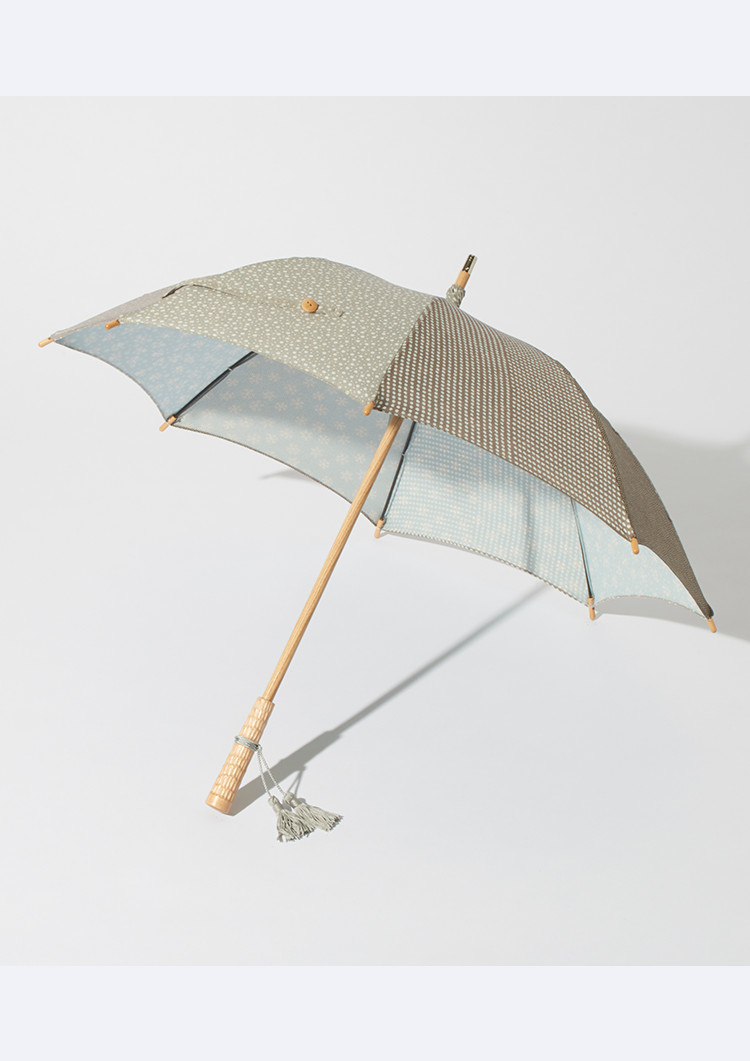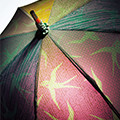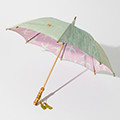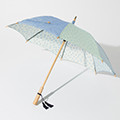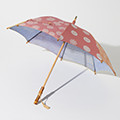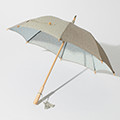Shiki no Higasa
02 Tokyo Some-Komon (Tokyo Fine-Patterned Dyeing)This parasol includes all that is “iki” about the kimono culture. “Shiki no Higasa” (parasol and the four seasons) is a parasol that uses double-sided dyeing, regarded as the highest form of expressive technique for “Edo Komon” kimonos. “Edo Komon” is dyed by placing the dye, made from coloured starch, onto the fabric, then steaming it in a steaming box. Double-sided dyeing(a) requires both sides of the silk no more than one millimetre thick to be dyed in different colours without the dyes penetrating through either side. The blending of the coloured starch, the most critical task, requires expertise and techniques that can now only be performed by a handful of craftsmen. Being able to get a glimpse of the reverse side patterns from the hem and sleeve is what makes double-sided dyeing of kimonos unique. And “Shiki no Higasa” parasol creates new sceneries by leveraging this idea when it is opened in the sunshine. For example, the “spring” side is represented with a stencil dye of willow trees on the front side and swallows on the reverse side. When the sun shines through the opened parasol, the two different sides are integrated to reveal a scene of swallows flying by willow trees swaying in the wind. Attention to detail, such as variations of the willow trees on the front side, can be found throughout. When the parasol is folded, gradations that emphasise traditional attire, using a Japanese colour arranging method created since the ancient times, appear to casually hint the kimono culture.
- Size: φ750mm × H630mm
(when closed: φ50mm × H 630mm)
Materials: Pure silk (cover), oak (pole), maple/bamboo (handle),
natural wood/bamboo (button, tip)
*The information on this site is as of May 2024.
*Sizes, colours and shapes of the actual products may differ slightly as they are handmade.
*Product specifications and suggested retail prices may change without prior notice. Prices shown are all tax exclusive suggested retail prices.

